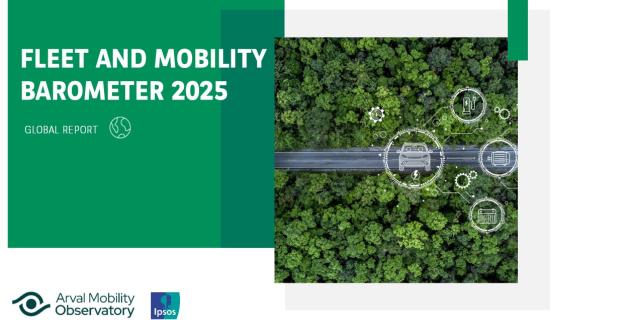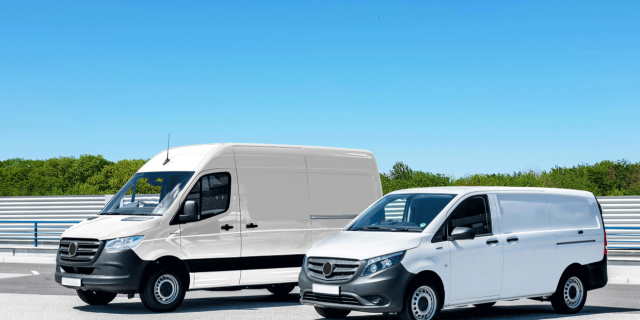Autonomous Vehicles: Cybersecurity, Insurance and Infrastructure
Today's vehicles provide an unprecedented flow of information.
Increasing connectivity and the evolving Human-Machine Interfaces (HMI) are taking steps toward the pinnacle of personal and shared transportation - autonomous vehicles.
Outside of specific use-cases, such as airports, parking lots, and dedicated-lane public transport, autonomous vehicles are not expected to be widely implemented before 2025. But trials ongoing around the world suggest there will be interesting applications for ridehailing, fixed-route transport, and even last-mile logistics. We’ve addressed many of these examples in the Arval Mobility Observatory eBooks.
The increase of connectivity, the gradual deployment of autonomous technology, and the sheer quantity of data transmitted between a vehicle and the cloud bring new challenges – cybersecurity threats and questions around AI ethics are amongst them.
One example of cybersecurity concerns relates to the hack of a car in 2015. A duo of hackers was able to control vital car systems through a vulnerability discovered in the car's internet-connected infotainment system.
They blasted loud music and shut off the engine of the vehicle. Later, in a parking lot, they made the car drive into a ditch by disabling the brakes. The number of hacks targeting cars is increasing. From 2016 their number has grown around 94% year-on-year.
Today many hackers focus on the Controller Area Network, or the CAN bus. As one security engineer put it - “It’s called the "can" bus, not the "can’t" bus, because once you’ve got access to it, there’s nothing you can’t do”.
Counterintuitively, however, as vehicles become more automated, taking control of features like the brakes, acceleration and steering may become harder. Data security standards implemented on fully connected vehicles are far superior to those earlier versions. Furthermore, the more systems are onboard, the safer individual systems will be.
Today, an AV depends on lots of sensors like LiDAR, sonar, radar and cameras, trained on deep-learning algorithms. As time goes on, it is likely that others, like thermal cameras, for better nighttime performance, will be added to the roster.
Although expensive today, they will produce heaps of data that will help protect the passenger and other road users, as well as assist with the insurance process.
The vast number of sensors means greater redundancy in situations, where, for example, a sensor reports that there is an object on the road when there isn't one, causing the car to swerve dangerously.
Regardless of the cause being an error or a malicious attack, an array of the AV sensors should be able to reassess and override the rogue system, making it hard for the hacker who only exploits one issue at a time.
The autonomous car of the future is likely to be built like a digital fortress, with its vital and non-vital systems separated into different data-streams that never cross paths. This separation and protection of data mean that malicious actors may be able to annoy a driver with their music choices or by heating seats, but at least they will have a hard time driving the car into a ditch.
Such digital separation systems are provided by companies like Blackberry QNX, who works with over 45 OEMs. It says that cybersecurity starts at the beginning of the manufacturing process and ends when the car's lifecycle does.
Beyond cybersecurity concerns, the inclusion and intrusion of intelligent technologies into vehicles may present an ethical issue. Tracking both what is happening inside and outside the cockpit, may make users uncomfortable. This is why stakeholders have to reassure the public and leverage service reliability, availability and affordability to optimise AV adaption.
In case of accident with autonomous vehicles above level 4, the liability will somehow shift from the driver to the OEM. The TPL usual cover will evolve toward a product liability cover. Manufacturers will have to insure themselves to cover the risks inherent to the usage of the vehicles they are selling.
OEM would possibly be entitled to pursue remedies against their software or ADAS devices suppliers, but there is still at the moment a lack of visibility and consensus on this topic. Regulations will have to evolve.
What is sure, is that premium levels and motor insurers will be highly impacted. The number of motor insurance companies and intermediaries will decrease dramatically as soon as liability will shift from driver or car owner and be concentrated to a few OEMs or mobility providers.
Few insurance companies are already offering telematics-aided pay-as-you-go policies – called usage-based insurance, or UBI. These policies already promise decreased premiums, but an even greater decrease will come from lower accident-rates from autonomous vehicles.
As infrastructure will play a significant role, OEMs and insurers will likely intensify their work with city and national governments. Clearer signage, designed for both the human eye and a camera, as well as roads with vivid lane markings and embedded trackers and sensors, will become enablers of our autonomous future. Perhaps stop signs will come to look more like a QR code than a red circle with a white brink.
With benefits and change all around, are you excited for the autonomous future?











